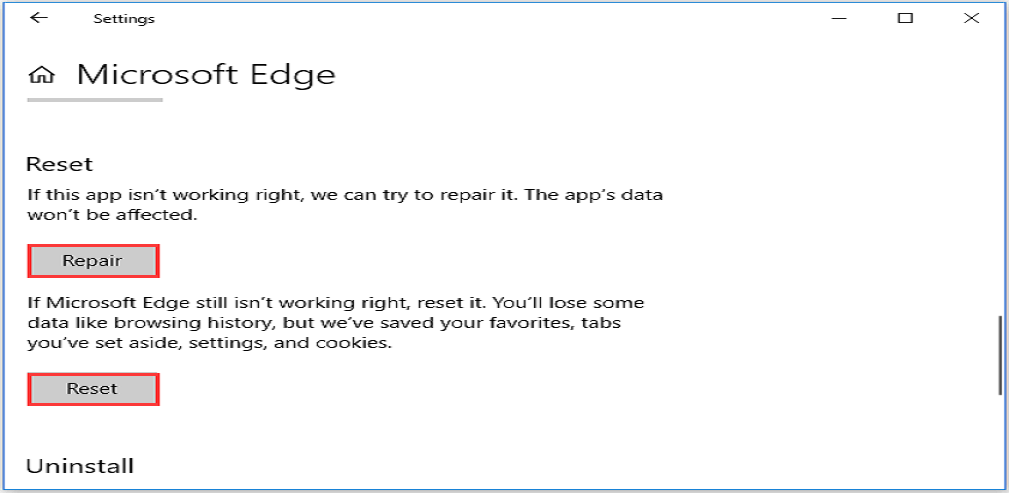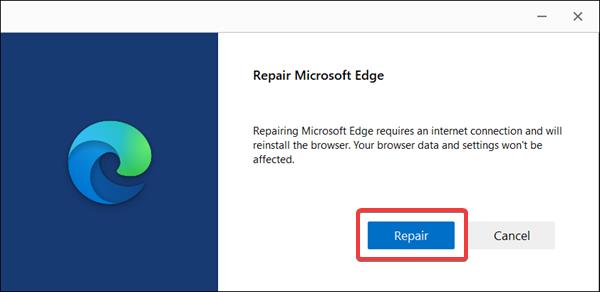
- Microsoft edge not responding at least once every day how to#
- Microsoft edge not responding at least once every day drivers#
- Microsoft edge not responding at least once every day download#
Microsoft edge not responding at least once every day drivers#
The link will open an email message for you to contact support or will take you to a support website.įix problems with apps from Microsoft Storeĭownload drivers and firmware for Surface Scroll to the Additional information section of the app's description page, and under Learn more, select the support link for the app. Search or browse for the app and select it. Select Start, and select Microsoft Store.
Microsoft edge not responding at least once every day download#
To learn more about updating your Surface, see Download drivers and firmware for Surface.Ĭheck for app updates and, if necessary, uninstall and reinstall the app.
Microsoft edge not responding at least once every day how to#
Solution 1: Install Surface and Windows updatesįor info about how to update Windows, see Update Windows. If Windows stops responding when you’re using a certain app, try these solutions: To learn how to restore your Surface, see Restore or reset Surface for Windows. If you’re still having a problem with Windows, try fresh start, restoring, and resetting your Surface (in that order). Solution 6: Restore or reset your Surface If the tool finds any errors, contact us. Select the Tools tab, and under Error checking, select Check. Press and hold (or right-click) Windows (C:) and select Properties. Open File Explorer in the taskbar and select This PC.

If the Windows Memory Diagnostic tool finds any errors, contact us.Įrror Checking tool: Run this tool to scan for errors on your hard drive. Windows will restart automatically after the test is complete. Although the test may appear inactive, it’s still running. When your Surface restarts, the diagnostic tool will run and display the test status on the screen. Select Restart now and check for problems (recommended). Select the search box in the taskbar, enter memory, and in the search results, select Windows Memory Diagnostic. Windows Memory Diagnostic tool: Run this tool to determine whether your Surface memory is working properly. To help identify specific hardware-related problems on your Surface, try running the following diagnostic tools that are built into Windows. To see how, visit Defragment your Windows PC. The disk defragmenter tool rearranges the data and reunites fragmented data so your computer can run more efficiently. Solution 4: Optimize (defragment) your hard driveĭefragmentation consolidates data on a disk or storage device so it will work more efficiently. Microsoft isn’t responsible for the loss of personal data. However, before proceeding, make sure you don’t need the files that are selected. After you are done cleaning the pins on the connector, make sure the pins are dry, and reattach the Clipboard to the keyboard.Ĭaution: By default, Windows pre-selects file types that generally are not necessary for you to keep. Rub the cotton swab back and forth across the pins. Clean the pins on the long, narrow part of the charger that you plug into your Surface. Rub the eraser back and forth across the pins. If you're using a Surface Book, try cleaning the connectors between the detachable screen and the keyboard.Ĭlean the pins on the connector with a pencil eraser. If you don’t have it, see Find my BitLocker recovery key to learn how to retrieve it.Ĭlean the connectors on your Surface Book

Windows might prompt you for your BitLocker recovery key. Remove your Surface from the docking station if you’re using one.

Unplug the power cord from the electrical outlet and remove everything you have connected to your Surface-power supply, Typing Cover, accessories, adapters, and memory card. Before you start troubleshooting, do the following:


 0 kommentar(er)
0 kommentar(er)
